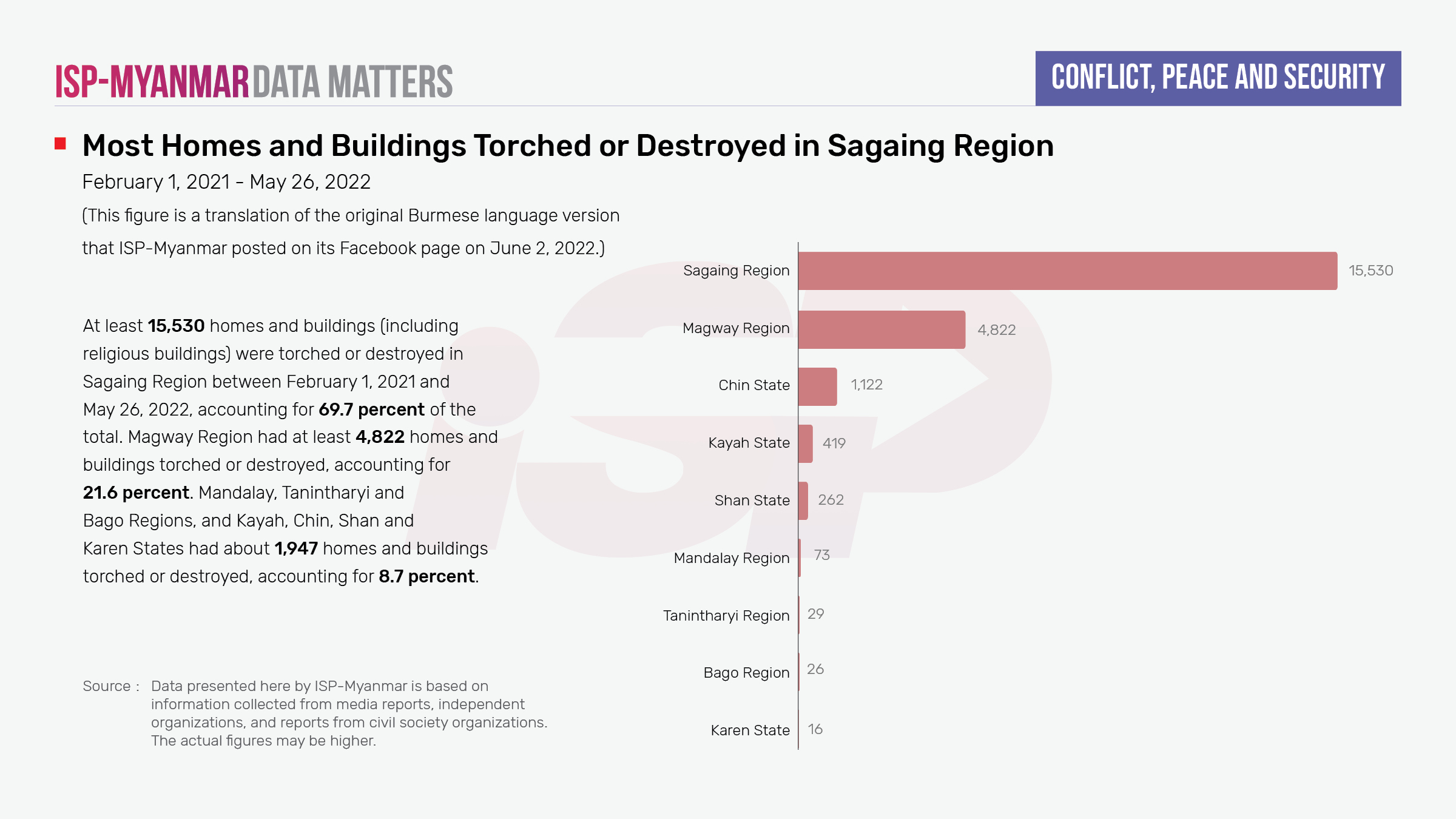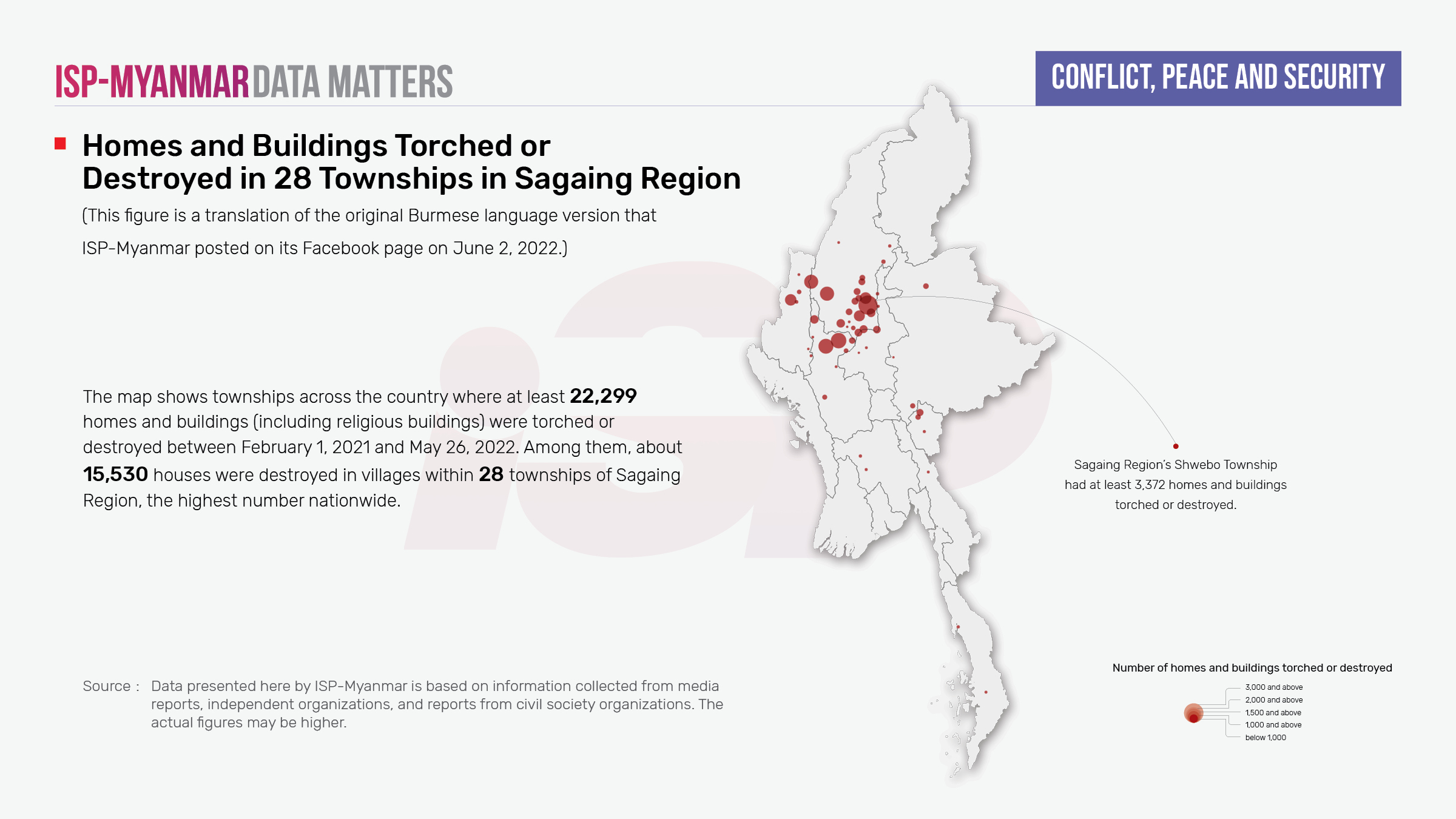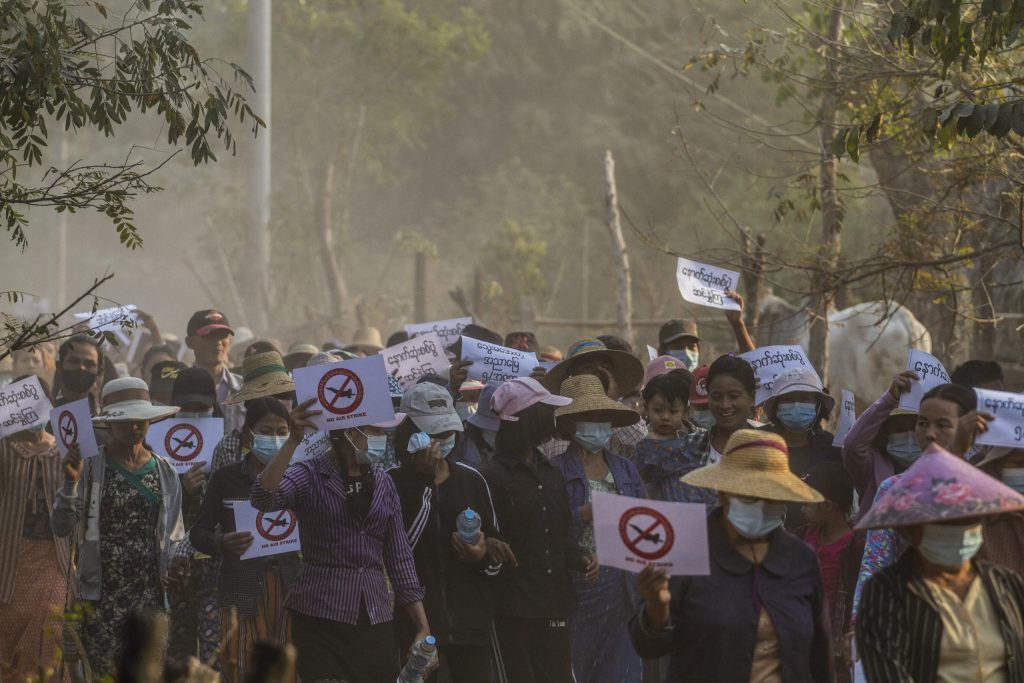Data Matters No. 22
(This article is a translation of the original Burmese language version that ISP-Myanmar posted on its Facebook page on June 2, 2022.)




Artillery attacks and fire destroyed at least 22,299 buildings, including homes and religious structures, between February 1, 2021, and May 26, 2022. Sagaing Region saw the heaviest damage with about 15,530 houses burned or destroyed, accounting for about 69.7 percent of the total. Magway had the second highest with 4,822 buildings burned or destroyed, or 21.6 percent of the total. The remaining 1,947 buildings, accounting for 8.7 percent of the total, were burned or destroyed across Mandalay, Tanintharyi, and Bago Regions, and Kayah, Chin, Shan, and Karen States.
At least 7,662 buildings were burned or destroyed between May 1 and May 26, 2022. May had the highest number of buildings month-by-month destroyed because of armed conflict since the military coup. Some 5,337 of these were in Sagaing Region, while 2,143 were destroyed in Magway Region, 110 in Shan State, 30 in Mandalay Region, 29 in Chin State, 10 in Karen State, and three in Kayah State.
At least 393 other buildings were torched in at least 18 villages in Sagaing Region’s Myaung Township between May 18 and May 25, 2022. The targeted villages are in the main areas where local defense forces (LDF/PDF/CDSOM) operate. Another 100 buildings were burned down in Mintan village, also in Myaung Township in Sagaing Region. Mei Ma Thaw (Mae Ma Thaw) village has already been destroyed more than seven times.
∎ Why does it matter?
Studying the post-coup situation helps to determine if there has been a change in conditions related to Myanmar’s peace process. Furthermore, examining the number of civilian fatalities and injuries, determining how they were killed or wounded, and establishing the number of people displaced by fighting makes it possible to know whether or not armed forces have committed human rights violations from the perspective of transitional justice.
∎ Other relevant readings
On-the-ground reports from ethnic news organizations and other independent media groups provide regular updates about conflict situations, their impact, and the collateral damage in the aftermath of the military coup. These include reports of civilian fatalities, houses torched, and rising refugee and IDP numbers on the ground. In addition, records and reports by United Nations organizations such as the United Nations Office for the Coordination of Humanitarian Affairs (UNOCHA) and other independent local and foreign organizations also provide information about the ongoing conflict situation in Myanmar.

